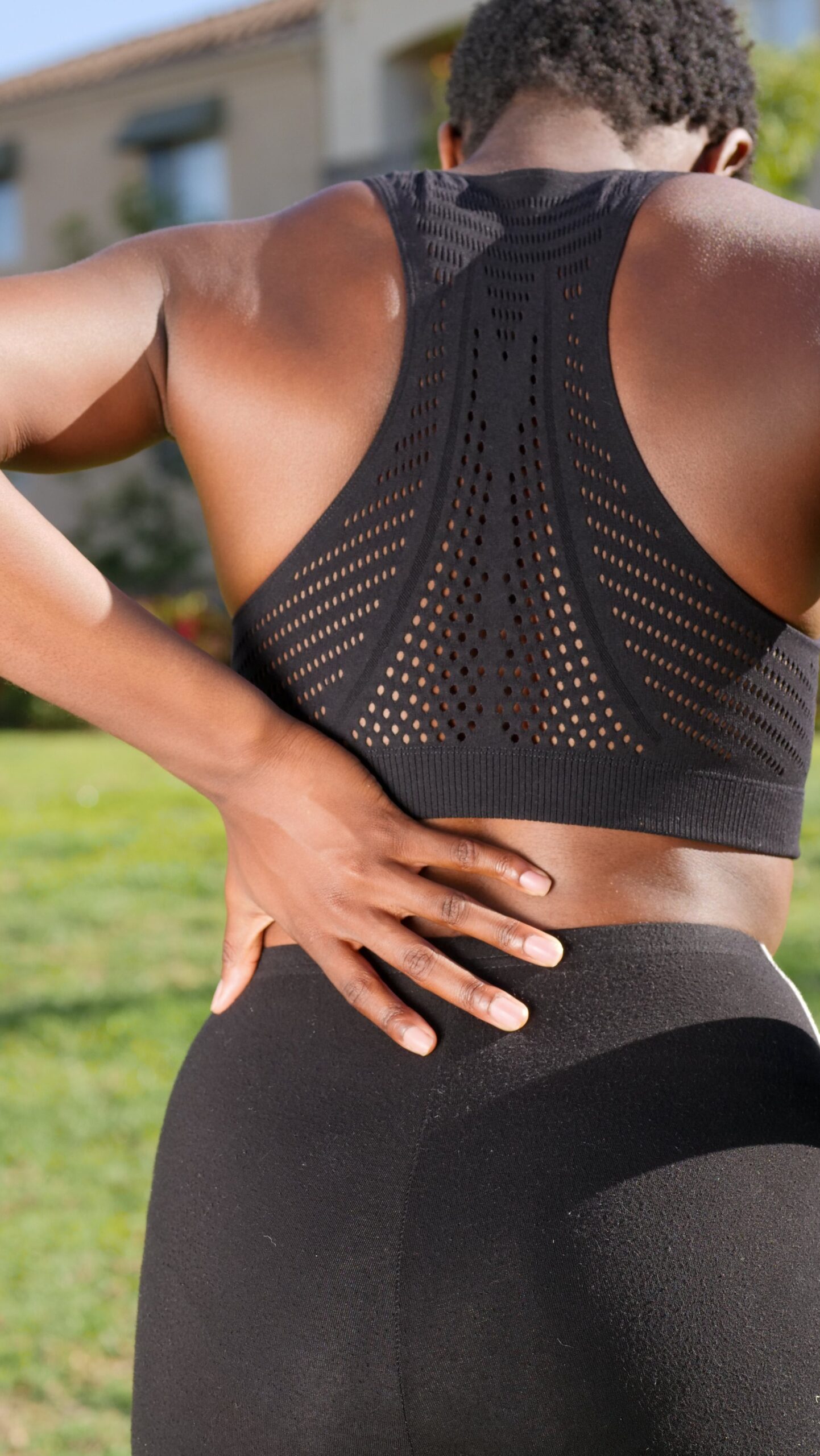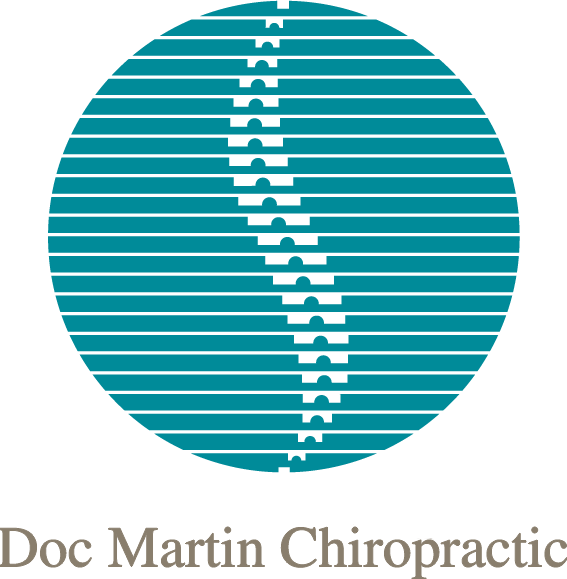
Life comes to a screeching H-A-L-T! One moment you feel
great, the next moment: agonizing low back pain.
Bent over to tie your shoes, and ZAP—a lightning bolt RIPPED
through your back! Maybe even your hips and legs.
Sure, you’ve had your share of backaches, but nothing like this.
Now you’re down for the count—every move excruciating.
No matter what you do, you can’t escape the pain.
Frustrating. Frightening. Maddening.
Makes no sense.
One moment your back feels “fine,” or “fine enough.”
The next moment—PAIN! RED-HOT SEARING PAIN—and just
from tying your shoes!? Come on . . . what’s the deal?
Panicked, you can’t help but wonder,
“Can this be fixed?”
Quick answer: Yes—almost always. And faster than you may think.
Your Sacroiliac May Be Out of Whack!
Low back pain can be caused by many different things.
However, in my experience, the overwhelming majority of
back pain, from annoying backaches to “out of the blue,”
drop-to-your-knees kind of back pain, are caused by a
sacroiliac joint dysfunction or “slippage,” too much
movement in the sacroiliac joints.
The good news. In my office, for me, a chiropractor,
back pain caused by a sacroiliac joint slippage is usually
a slam-dunk!
Even after just one or two adjustments,
most people feel a noticeable difference. [click here]R-E-L-I-E-F!
No kidding. No exaggeration.
Hard to believe, right? Especially if pain has YOU trapped its teeth right now.
Seeing (or feeling rather) is believing.
We’ll get to that.
First, What’s a Sacroiliac Joint?
That’s where both hip bones connect to your back at the
sacrum, the large triangular bone at the bottom of your spine. [click here]
The sacroiliac joints are located right below your waist, extending
down toward your tailbone (coccyx).
To locate your sacroiliac joints, lightly place the web of your hands
on the top of your hip bones. Fingers point toward your stomach.
Thumbs point toward the center of your lower back.
Walk your thumbs down the back of each hip bone which attaches
to each side of your lower spine at the sacrum.
Those are your sacroiliac joints.
What’s the Big Deal About Sacroiliac Joints?
The weight-bearing sacroiliac joints create a strong, supportive
foundation for your spine and upper body.
The sacroiliac joint is a joint like other joints (knees, ankles, elbows)
with one distinct difference: a major part of the sacroiliac joint
is not supposed to move!
Very strong ligaments attach your hips to your sacrum. Those
ligaments keep your sacroiliac joints immobile, stable, and strong.
If those ligaments get strained, sprained, compromised, or weakened
through injury, wear and tear, age, or any number of so-called minor
movements (like bending from the waist to tie your shoes), your
sacroiliac joints can start to move or “slip.”
This is called sacroiliac joint slippage. [Click Here]
It’s kind of like a sprained or strained ankle. When you sprain your
ankle, it’s best to get your weight off your ankle IMMEDIATELY.
Same with your lower back.
When you hurt your sacroiliac joints in your lower back, it’s absolutely
critical to IMMEDIATELY get your weight off your back:LIE DOWN! I can’t emphasize this enough. Lie down. Find the most
comfortable position and stay there!
Lying down is the ONLY position that gets your upper body weight
off your low back. On a bed or couch. No recliner. And yes, it may
be excruciating to turn in bed.
DON’T SIT. Sitting aggravates a sacroiliac joint slippage, whether you
can tell it or not.
Sacroiliac Joint Slippage Can Be Sneaky.
Unsuspected by you, a sacroiliac joint “slippage” can lurk
for months, even years, causing no pain at all.
Or you may have lower backaches on and off. No big deal.
Easily ignored.
Even if your back pain hurts enough to demand your attention,
after pain fades, it’s quickly forgotten.
After pain disappears, it’s human nature to forget all about the pain.
Then one day you bend over to make your bed and . . . WHAMO!
Wicked back pain strikes–taking over your life!
Crippling Low Back Pain: A Surprise Blessing
For two weeks, debilitating back pain forced me to crawl
on the floor to care for my 9-month-old son. [click here]
My husband and I, both fledgling chiropractors, couldn’t help
my lower back pain. It only got worse.
Desperate for relief, we called a more experienced,
highly skilled chiropractor.
After this chiropractor’s completely PAINLESS
adjustment, in less than 60 seconds I was on
my feet, walking, with almost no pain.I was shocked and, more significantly, humbled by
the glaring truth: I had a lot to learn as a
chiropractor!Seeing, or more accurately, feeling IS believing!
Within a few days, the pain disappeared. Never returned.
Unbeknown to my husband and me, I had an acute sacroiliac
joint slippage. Exactly what may be tormenting you right now.
That experience sparked my quest to master this chiropractic
adjusting technique for the correction of sacroiliac joint slippage,
called Sacral Occipital Technique (SOT). [click here]
Checklist for a Sacroiliac Joint Slippage.
- Lower back pain or ache at or below your waist,
center or to either side.
- Lower back pain or ache triggered or worsened by
bending, lifting, or twisting from the waist.
- Lower back pain or ache that often worsens as the day
goes on; somewhat relieved, not necessarily all the way,
when lying down.
- With constant, sharp pain lower back pain, virtually all
movements and most positions are difficult, if not
impossible: sitting, standing, walking, dressing, turning in bed,
engaging in normal activities.
- Lower back pain worsens with prolonged sitting, standing, walking,
and engaging in everyday activities, like getting out of bed or
brushing your teeth.
- With or without lower back pain, areas of pain and/or stiffness
that could be related to sacroiliac joint slippage: hips, groin,
legs, knees, middle to upper back, neck, headaches, migraines,
jaw, even feet. [click here]
If any of these symptoms describe what you may be
experiencing right now or have experienced in the past, it’s highly
likely that you have a sacroiliac joint slippage.
Consider getting checked out by a chiropractor who uses
adjusting techniques specifically designed for the correction of
sacroiliac joint slippage.
Remember, given the appropriate chiropractor
for you, lower back pain caused by a
sacroiliac joint slippage usually is a slam-dunk,
even if you’ve had it for a long time!
What Can You Do When Lightning Strikes
Your Back?
-
Acute, sudden, severe low back pain.
STOP doing what you’re doing.
LIE DOWN. Lie down immediately (on a bed preferably
or couch). Find the most comfortable position. Try lying on
your back with a pillow under your knees or on your side
with a pillow between your knees.ICE. 20 minutes on. 40 minutes off. Don’t use heat or hot tub.
GET UP ONLY FOR NECESSITIES. Bathroom, food, or water.
LIE DOWN UNTIL THE PAIN SIGNIFICANTLY SUBSIDES.
CALL A DOCTOR OF CHIROPRACTIC. If an acute sacroiliac
joint slippage is not corrected, the pain can hang on, causing
other problems. Even if the pain gradually fades without help,
the underlying sacroiliac joint slippage may linger. Consider
getting your spine checked out to avoid future lower back attacks.[Click here] to check out this research justifying the effectiveness
of chiropractic care for acute lower back pain. (SMT = Chiropractic Adjustments)
[more research] [more research]
-
Chronic (three months or more) back pain, and/or
pain, ache, or stiffness in hips, groin, legs, knees,
feet, shoulders, neck, and/or headaches and migraines.
PAY ATTENTION TO YOUR BODY. If lying down eases the pain,
lie down.AVOID activities and positions that aggravate your lower back,
such as prolonged sitting, standing, bending, lifting, or twisting.ICE.
MILD EXERCISE. Mild, core abdominal exercises and easy walks
may help.USE COMMON SENSE. If a position or exercise worsens
the pain, don’t do it. On the other hand, if a position or exercise
eases or stops the pain, please continue!
-
Recovery Mode.
Once your lower back pain is well on its way to full recovery,
start a routine exercise program and stick to it.Ask your chiropractor for guidance.
Walking and core abdominal exercises can be HUGELY
helpful for the ultimate stabilization of the sacroiliac joints.
STOP THE MADNESS–BACK PAIN MADNESS!
Sick and tired of being held hostage by back pain?
Seek a chiropractor who is the just-the-right-fit for you.
Lots of chiropractors are out there using many different
methods for adjusting the spine.
Surely, you can find the right one for you. [click here]
Some chiropractors use effective, lower force
methods of adjusting that DON’T HURT–NO CRACKING,
NO POPPING!!! [click here]
Some chiropractors use higher force methods that
you might prefer.
This may be the perfect moment to put an end to
that back pain and RECLAIM YOUR LIFE!
Maybe, just maybe, the right-fit chiropractor
holds the magic key to your FREEDOM!
